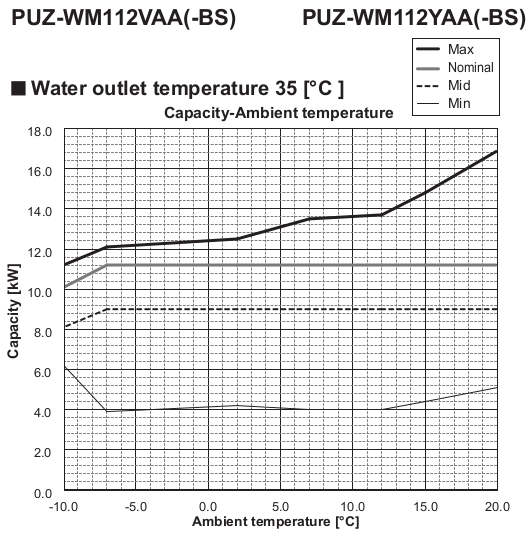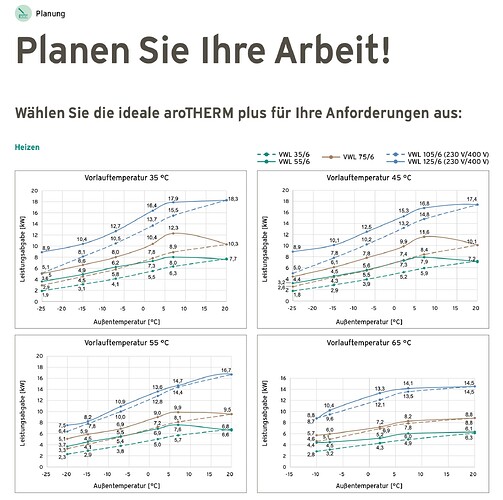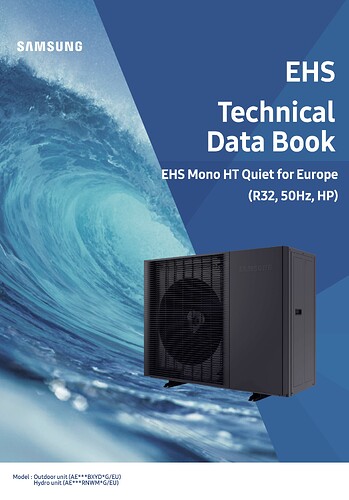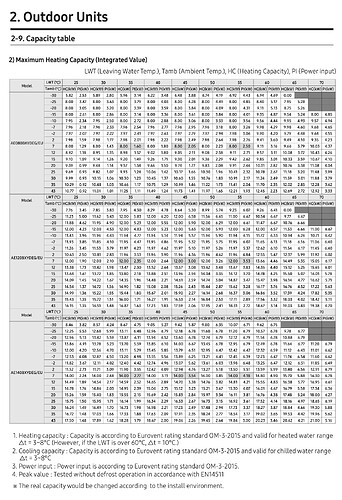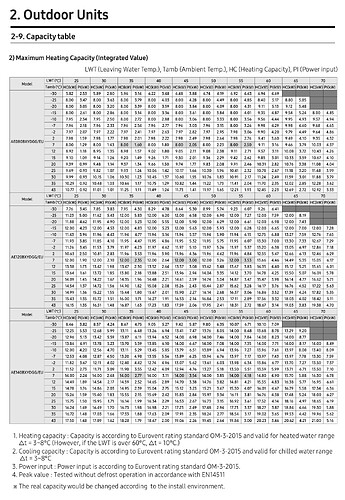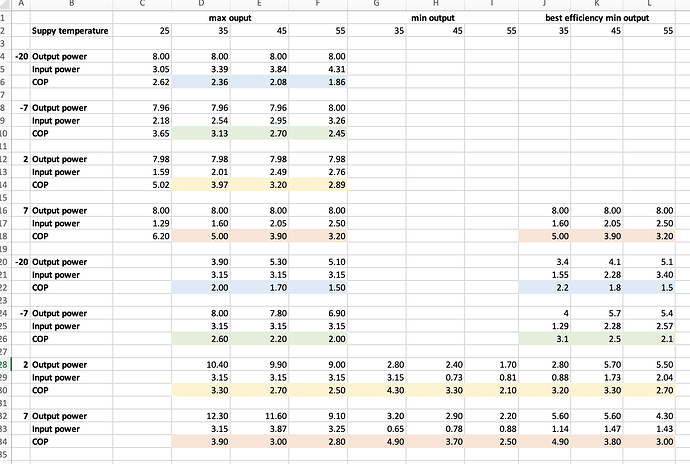Samsung offer peak output tables (enough for “Planen SieIhre Arbeit” purposes) to all distributors as part of the “EHS Technical Data Book”
Their authors are not as installer minded as Vaillant though (there isn’t a quick summary of just what you’re affter presented in a nice easy way in the booklet with the appliance; there’s just a huffing great PDF with the info buried halfway through)
Fun stuff you can see in this?
All of them run the compressor incrementally harder at lower outdoor temperatures in order to maintain capacity at the expense of COP (there are some internal re-injection ports and control valves that make this possible without burning up the compressor that are not fitted to other models)
8 kW @ -25C with a leaving water temperature of 55C sounds impressive / is genuinely impressive and the COPs when it’s genuinely cold outside are impressive. Irrelevant in a UK context - but useful to you if you are trying to make hot water in -25C with a COP of over 1.75, and heat your house via underlfoor heating in -25C with a COP of over 2.0.
The highlighted numbers at +7C (where all their efficiency labels are tested) are also impressive. It’s not quite as blow your socks off impressive as you might first think though. The Samsung rep will compare against others using max ouptut. COP 5 at 35Cthey will say. Vaillant is only 3.9; 3.9 at 45C but Vaillant is only 3.0; COP 3.2 at 55C but Vaillant is only 3.8 etc.
That’s missing the point though. Houses don’t need 8 kW at 35, 45, and 55C. They need less heat the warmer it gets. Compare the outputs at either minimum or the best efficiency point at each outdoor temperature and it’s much closer (5.0/4.9, 3.9/3.8, 3.2/3.0)
Compare.xlsx (11.4 KB)
The Vaillant can turn down usefully lower than the Samsung. The latter unit gets those high “max output” efficiencies by actually being a MUCH bigger unit that’s then software limited ot only run at a “max” output" that is pretty much the best efficiency point.
You need to know this when designing.
The Vaillant “7 kW” means about 7 kW (net of defrost) at about -7C; and it is designed to run at less than this by being conencted to rads/underfloor and allowed to “tickle along” at a relatively low output of it’s own managing.
The Samsung “8 kW” means about 8 kW (net of defrost) down to -25C; and it appears* pretty much designed to run with “on / off” controls with their software artifically imiting the output of the unit to just 8 kW at +7C. (they don’t bother limiting it some much above this because…drumroll…that doesn’t affect the score they get on the efficiecy label)
I guess what I’m saying here is…this is not simple. Any data that you do will be misrepresented against you by marketing asshats from the other brands…so it’s easier not to play the game and to rely on the installers to specify something appropriate / rely on independently verified results for how the units perform in the field with various designs.
*Though it’s far from obvious because nothing useful is published in terms of part load capability; and the internal controls appear to be as dumb as a rock with respect to managing output. (run as hard as you can and keep running until setpoint is breached and you can’t turn down any more?)
![]()
